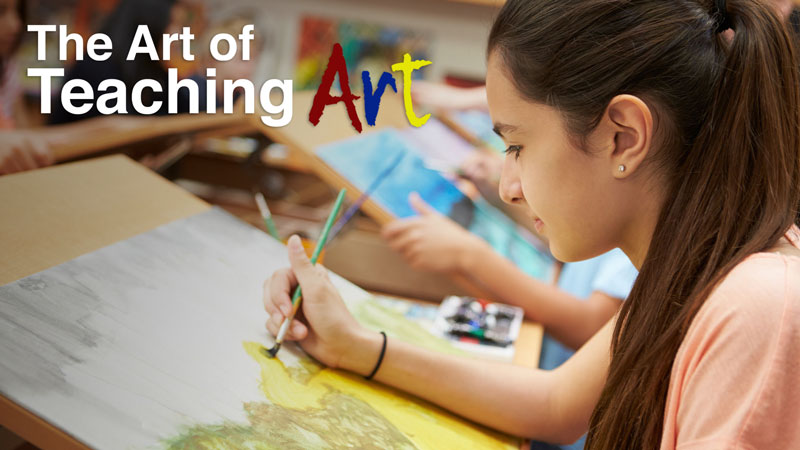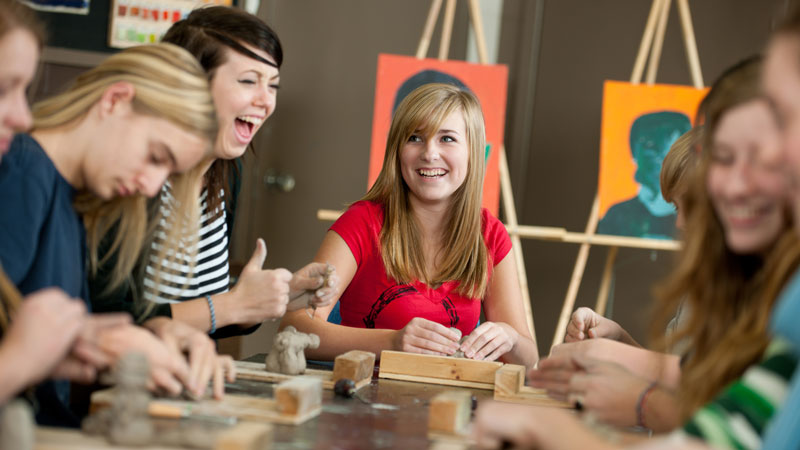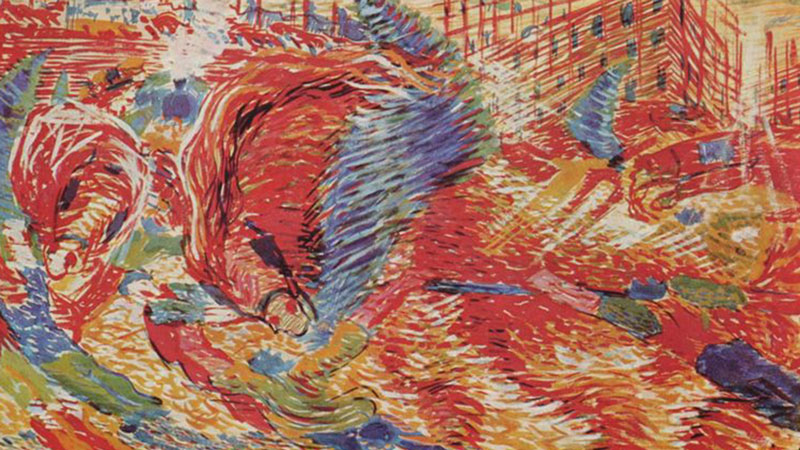
The elements of art deal with the basic components of art-making, while the principles of art deal with the way that the elements of art are arranged in a work of art. One of the principles of art that is usually not debated is movement.
There is more than one type of movement found in artworks. The first type of movement found in artworks is the obvious, physical movement. This is the feeling of action found in a work of art. This can be conveyed in a number of ways. The most direct way to show movement is to draw or paint lines coming from the object that is moving. For example, this type of movement can be seen in the image below…
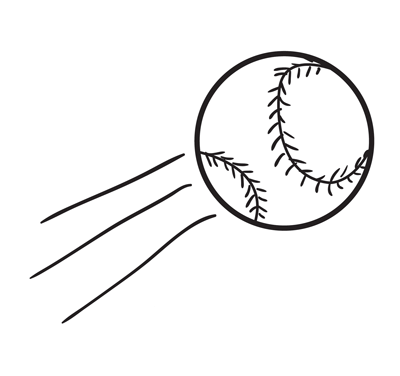
Communicating movement in this manner may be effective but it is definitely not aesthetic. It is also quite “cartoony” as well.
A group of artists called the “Futurists” attempted to show movement in their artworks in a similar, but more aesthetic fashion. They are termed the “Futurists” because their interest in future technologies. Because the Futurist movement took place in the early 1900’s the technologies that they were interested in may seem quite antiquated by our modern standards.
One technology that they were especially interested in included moving pictures. Thus, movement became a centerpiece of the style.
By using multiple brushstrokes and repetitive marks, they hoped to create a feeling of action into their paintings. Although the movement was short-lived, the artwork does provide some methodologies into creating movement in artworks.
Take a look at the image below by Umberto Boccioni, entitled The City Grows, 1910…
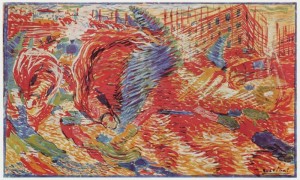
Notice how the repetitive lines can create the illusion of movement.
Another way to communicate movement in an artwork is to juxtapose the subject(s) in manner that cannot be replicated by a static pose. In other words, to have the subject portrayed in somewhat of a “freeze frame”. This type of movement may take the form of the subject being in the air, or at an angle.
Setting up the composition so that the subject creates a diagonal line through the picture plane can create a sense of movement as well. This type of movement is illustrated in this painting by Edgar Degas, entitled, Balletprobe, 1873.
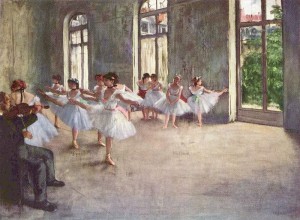
In this case, we know that the dancers cannot hold poses for very long. We know that they are in a state of motion, which creates the illusion of physical movement in the artwork.
The third type of movement found in artworks deals with the way a viewer’s eye moves through the work of art. This movement is dictated by the placement of objects inside of the picture plane. Placement of the objects will lead and guide a viewer’s eye. Dynamic compositions are aesthetically more successful than static compositions. So, determining the best placement for subjects within your composition is very important. This aspect of movement can best be illustrated by the following video…
When I am teaching movement to introduction level art students, I introduce them to the various ways of creating movement in art. I show them lots of examples, and we discuss as a class how the artist intended to convey movement.
I then challenge them to create movement in a series of thumbnail drawings, usually 5. These small, quick drawings do not have to be representational. They may be purely non-objective. The goal is to create movement in a variety of ways. I ask them to number their compositions.
On separate piece of paper, I ask them to note in written form how they attempted to show movement in the numbered composition. Students then trade thumbnails (just the drawings). Without talking, I ask them to write how they think their classmate attempted to show movement in each of the compositions.
Each response coordinating with the numbered composition. At the end of the exercise, students trade back their compositions and discuss their comments with each other.
This exercise not only helps students to understand movement in artworks, but also helps them to learn how to evaluate artwork, and hopefully, think more deeply about the artwork that they are created themselves.
If time permits, students can then decide to create finished work from one of their thumbnail drawings.
If so, join over 36,000 others that receive our newsletter with new drawing and painting lessons. Plus, check out three of our course videos and ebooks for free.

